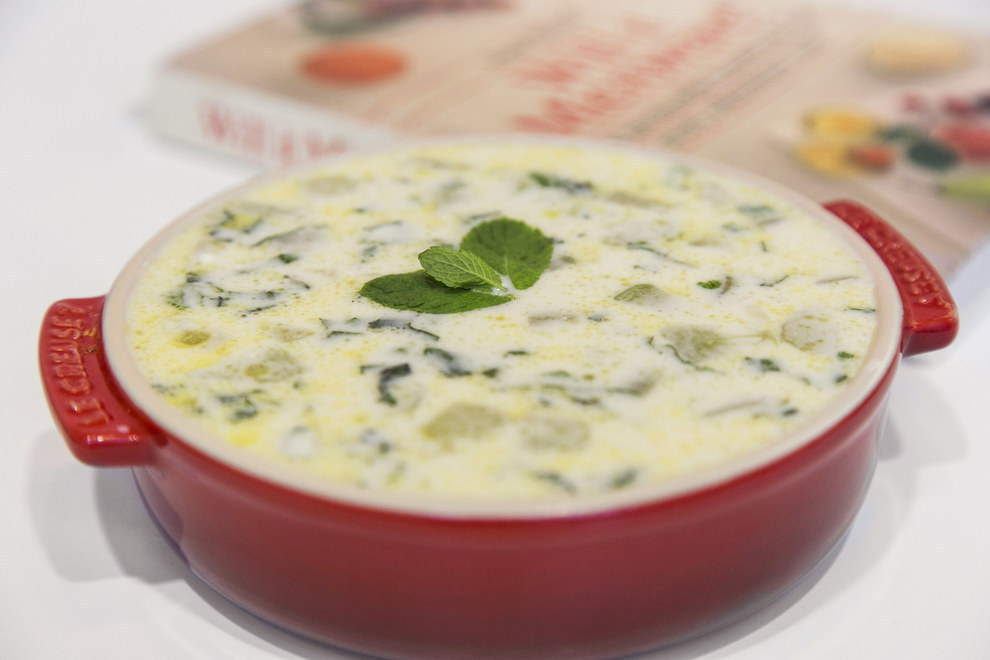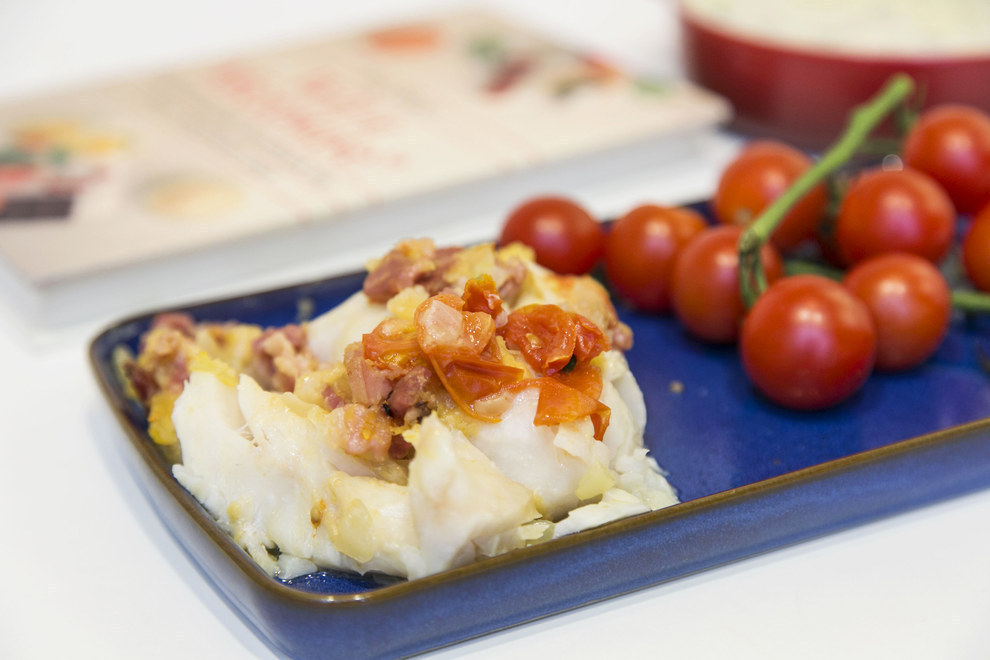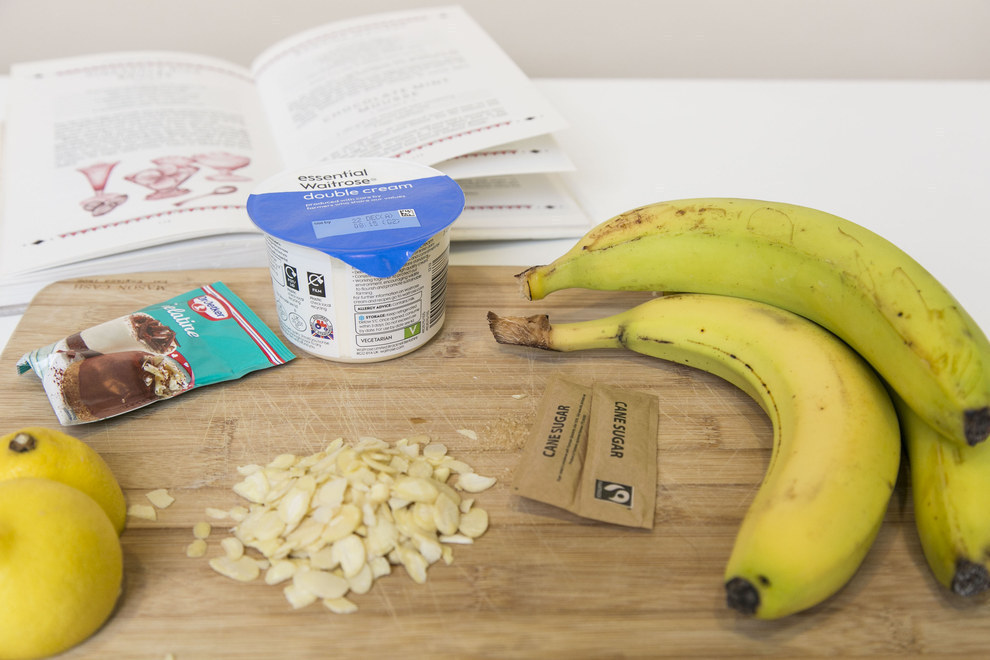Picture the scene: My mum and I are spending our Saturday morning in a charity shop as we have done for many years.
She's looking at books; I'm trying to find a shirt or three. "Morenike!" she shouts. There are only four people in the shop, including the shop assistant and ourselves. And I'm standing about three feet away from my mum. She's holding a book, which she delightedly thrusts at me. "This will be really good for you to take to uni," she says. "I'll get it for you."
Written by Joan Hood, the rhetorically titled book Will It Microwave? was published in 1986.

In the mid-'80s, microwaves were quickly becoming a standard household appliance, making this book a must-have. Unfortunately, the book never made it into the kitchen during my time at university, remaining in a never-unpacked box of books… Until now.
For the starter, I made the “Cucumber and Yoghurt Soup”.

I chose this recipe because it looked to be the most exciting. Many of the soups and starters offered in Will It Microwave? have vegetable components, which may have seemed adventurous in the halcyon days of the 1980s but doesn't in 2015. If I had only the ingredients and no recipe, I would have thought that this would eventually be a decent salad. It's only when the recipe calls for me to microwave the mixture then add chicken stock and yoghurt to it that I pause for concern. Chicken stock is not for salad. And it's definitely not for soup either.
Looking at the end result of what Joan Hood assuredly describes as a "soup", it's hard to believe that a large cucumber is really in there. A cucumber is mostly water and that evaporated out during microwaving. What's left behind is slippery slices of translucent cucumber swimming around in a sea of chicken stock and yoghurt. Garnishing the dish with chopped mint made it look slightly more appealing but only about 2% more.
How it tasted:

Floating on the surface of this pure white liquid were small globules of oily grease from the chicken stock. Even thought the natural yoghurt was thick in texture, the soup was thin and watery. There was no good flavour in there. At first, there was a chalky, sour taste. And then that was quickly chased by a meaty, chicken-y aftertaste. Nothing should ever taste like sour milk, except sour milk.
Next, the main: "Stuffed Cod Cutlets".

I thought bacon, tomatoes, and fish all together would taste delicious so this dish was selected from the mains in the cookbook. Bacon and onion together is holy food matrimony for any time of day. I prefer my bacon fried to a crisp so the fatty chunks of microwaved bacon did not fill me with much hope for this. Only stuffing this mess into the crevices of the cod fillet could surely redeem this dish. After stuffing, the next step was to "cook on full power for 10 minutes".
Ten minutes is a long time to wait for fish to be cooked in a microwave. If the fish were in a frying pan or an oven, you could see it actually cooking right in front of you. But with a microwave, you can only watch the dimly lit concoction rotate continuously for an entire 600 seconds. And because everything is microwaved together, there is very little you can do to present the food in an appetising way. It is what it is – soggy breadcrumbs, warm onions, and tomatoes on microwaved fish – and that's the true spirit of the '80s, probably.
How it tasted:

I was hesitant about eating the fish. I only ate around the edges because I was suspicious about whether it had cooked all the way through. But the saltiness of the bacon combined with the sweetness of the tomatoes made this dish surprisingly tasty. The only downside was the soggy breadcrumbs. Heated up, the breadcrumbs had taken on the flavour of the fish but also its moistness. Would I normally eat soggy, fishy bread? Probably not. But this dish would be typical student food: Whatever you have in the cupboard, just microwave it. And hopefully, don't get E. coli.
For dessert, I made "Banana Mousse".

As if Joan Hood could see into the future, the majority of the desserts in Will It Microwave? are essentially mug cake recipes. Throw together a cake mixture, microwave, turn it out on to a dish, top with icing, and serve – done. The banana mousse was different so it stood out. And it was definitely the easiest dish of the three to make. However, after mashing up the bananas, every step in the recipe felt like a wrong turn. Usually, you'd soak powdered gelatine in water, and allow it to warm and dissolve thoroughly over a bain-marie.
But when you've got a microwave, who has time for that? Not Joan, that's for sure! I dissolved the powder in a small amount of water so it formed a "thick paste", and tentatively watched it bubble for a minute in the microwave, until it started to foam. The gelatine was then added to the banana mix and refrigerated to set. Banana pulp and gelatine do not a mousse make.
How it tasted:

I had high hopes for this dish because it was essentially mushed up bananas. Those hopes were dashed after the first mouthful. There was a graininess that came from the bananas that was not a pleasant sensation. It looked like liquidised banana but it had the solid texture of jelly. Like if a banana and jelly had a baby, this banana mousse is what would happen.
~Final thoughts~

Most of the time it took me to make these dishes was spent in a "microwave Iimbo", impatiently waiting for the timer display to count down to 0:00. Throughout the cooking process, I was by turns impressed, disgusted, and surprised.
The soup had meatiness with no meat, the sourness of the yoghurt, and the floating chunks of cucumber – it was upsetting; I would never serve that. I love fish and bacon but after the stuffed cod cutlets, I firmly believe neither should see the inside of a microwave. The banana mousse wobbled and it should have been wobbled all the way to the bin.
It's probably for the best that I never used this cookbook at uni. Thanks anyway, Mum.



